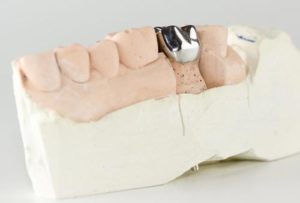All You Want To Know About Stainless Steel Crowns

Dental crowns are used to restore teeth, provide support to the teeth and cease further decay. They are sometimes used in an aesthetic procedure for covering teeth that are discoloured or out of shape. Sometimes the teeth get damaged badly that it cannot support any filling then crowns are used to help. This dental crown acts as a crown on the top of the teeth that need extra care.
Tooth decay is not confined to only adults, children also suffer from tooth decay. In paediatric dentistry, dentists usually prefer to go for stainless steel crowns when offering care to children. Children generally consume a lot of sugar through the different types of food they consume be it cereals or fruit juices or even milk. Food diet of children create lot of possibilities of tooth decay to happen and one of the main reasons can also be due to the limited ability of children in maintaining dental hygiene.
Children’s teeth are different in composition from the adult teeth. They do not have the amount of dental enamel in the same density as adults. That would mean that the dental pulp is more to the surface of the enamel covering as opposed to that in adults, where they are few layers below. When the tooth gets affected by decay, the dental pulp also is affected. It is for this reason that dental crowns are needed to maintain dental health.
Procedure
Permanent crowns can be made of any type of metal, in paediatric dentistry it is usually the steel crowns that are used. In children, the steel crown fits or covers the entire teeth and protects it. When the milk teeth come out, then the steel crown also comes out with it.
As with every dental procedure, this treatment also starts with dental consultations. It does not require many consultations and is generally done in around two consultations. In the first consultation the dentist would examine the oral health of the child and the second consultation involves placing the dental crown.
X-ray is done to understand the extent of damage in the teeth. This also helps to rule out if the jaw bones are affected. This will require another type of treatment – like the root canal. Placing of stainless steel crowns or silver crowns as they are called is done under anaesthesia. This is because it involves preparing the teeth for the procedure. Children might feel numb in that area after the procedure, but this wears off. Care must be taken to make sure that they do not bite their cheeks during this time.
Advantages of stainless steel crowns
When compared with other dental crowns, stainless steel crowns are favoured by paediatricians for a variety of reasons.
These are long lasting and also not expensive – with children, one needs to check into the durability of the crowns. Yes, the teeth will fall away and permanent teeth will take its place – but it is important that the milk teeth remain in good health and structure for the time they are needed. Stainless steel crowns serve this purpose very well.
Repairing and restoring milk teeth is definitely achieved with this treatment. Besides this, it is very beneficial when there are cavities in the teeth that are difficult to fill in. Tooth filling might not be suited for everyone as this can put more pressure on the weak teeth. The best option is placing these crowns. They remain in place until it is time for the teeth to fall out and the permanent teeth to erupt.
The procedure does not require many consultations – it gets over in few sittings and it best suited for children as they would get restless and cannot sit for long hours or frequent consultations unlike adults. This also because it is quite durable and does not require many re-treatments unlike other procedures. The products used are quite safe for health and do not produce much teeth sensitivity for children.
Types of crowns
These dental crowns come in various types. The traditional ones or steel crowns or the silver crowns and offer good support and protection to the teeth. There is another variety which has white facings. These offer better aesthetic value when compared with the traditional ones. The front portion of the crown that is seen outside is covered with a plastic coating so that it does not look silver but rather white. Some prefer this type due to this special feature. Based on the needs of the child and the appearance – the different types of crowns can be discussed with the dentist and treatment plan can be scheduled.
Caring for oral health
Placing crowns on teeth does not mean that tooth decay is stopped. The steel crown will only protect the teeth over the teeth which it is placed. Brushing and cleaning of teeth need to be followed as before. Numbness might be felt after the procedure as anaesthesia is used. This can be felt in the tongue, cheek, lips teeth etc. – care must be taken during this time to make sure that the child does not hurt themselves by accidentally biting their check or tongue. Children should be monitored closely and should not be given anything to chew until the effect wears off.
Parents should support their children when they are brushing or flossing, need to teach them the proper way to brush and floss. Developing a daily routine for them is important as they tend to follow habits formed in childhood. Dental consultations should be conducted twice yearly for children or when needed. This helps to treat dental concerns when they develop. Teaching children the importance of consuming healthy food, reducing junk food etc. is also important in maintaining oral health in children.
